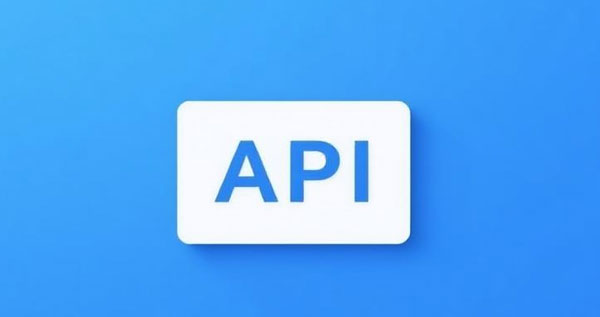WhatsApp API Advanced Practices: Security Protection, Monitoring Optimization, and In-depth Industry Case Analysis
1. Introduction
Once basic WhatsApp messaging and reception are implemented, enterprises often face challenges in ensuring system stability, security, and maintaining efficiency and compliance during large-scale operations. Mere connectivity is not enough to support continuously growing business demands. Further refinement is needed in areas such as access security and permissions, logging and alerting, performance tuning and capacity planning, data compliance and privacy protection, along with case-driven review and optimization.
2. Security and Access Control
2.1 Access Token and Secret Management
All WhatsApp Business API requests require an Access Token.
Short-lived tokens (valid for about 1 hour) are suitable for development and testing, while long-lived tokens (about 60 days) should be used in production and refreshed regularly.
Refresh Strategy: Use Facebook Graph API to obtain a new token 5 days before expiration and replace it seamlessly in the application.
Secure Storage: Store tokens and secrets (e.g., App Secret) in secure managers like HashiCorp Vault or AWS Secrets Manager. Avoid hardcoding or plain-text configuration.
2.2 Webhook Hardening
Webhooks handle all inbound events, and callback authenticity must be ensured:
Enforce HTTPS: Use valid SSL/TLS certificates to prevent MITM attacks.
HMAC-SHA256 Signature Validation: Compare the
X-Hub-Signaturewith server-generated signatures to ensure payload integrity.IP Whitelisting: In firewall environments, whitelist Meta’s callback IPs for enhanced security.
Rate Limiting: Set thresholds for repeated calls from the same IP to prevent abuse or abnormal traffic surges.
2.3 Role-Based Access Control
Preventing credential leakage or misoperations is critical in enterprise environments:
Environment Isolation: Use separate Business Manager accounts and credentials for dev, test, and production environments.
RBAC Design: Assign minimal required permissions per role (developer, DevOps, security) and use approval workflows for sensitive operations.
3. Logging and Monitoring Practices
3.1 Deep Use of Message Insights API
WhatsApp’s Message Insights API provides message volumes, delivery rates, read rates, and failure metrics:
KPI Definition: Monitor message KPIs daily/weekly/monthly, focusing on template approval rates and 24-hour session response rates.
Auto Analysis: Store metrics in time-series DBs (InfluxDB or Prometheus), visualize with Grafana dashboards.
3.2 Centralized Log Collection and Analysis
A robust logging system is essential for troubleshooting and optimization:
Structured Logs: Log event type, user number, message ID, timestamp for easier search and aggregation.
Log Tools: ELK stack, Graylog, Fluentd, etc., depending on scale.
Retention Strategy: Use daily rollovers, tiered storage—hot data for 7 days, cold archives for 30+ days.
3.3 Alerting and Automated Operations
Rapid response to anomalies significantly shortens recovery time:
Alert Rule Examples:
≥ 5 signature verification failures in 5 minutes
Message failure rate > 1%
Webhook average response > 500ms
Automation: Integrate with PagerDuty, DingTalk, or Slack for alert escalation and trigger actions like auto-scaling or engineer notification.
4. Performance Optimization and Capacity Planning
4.1 Rate Limiting and Batch Sending
Avoid traffic spikes in large-scale reach:
Token Bucket Algorithm: Control requests per second (QPS), ensure compliance with WhatsApp’s limits and smooth burst traffic.
Batch Sending: Send messages in chunks (e.g., 500 per batch, 1-second interval), decouple sending from triggers using async message queues.
4.2 Retry Strategy and Backoff Algorithms
For transient failures, retry logic boosts delivery success:
Error Categorization: Retry only retryable errors (HTTP 5xx, timeouts).
Exponential Backoff: Start at 1s delay, then 2s, 4s, 8s; retry up to 3 times before flagging for manual investigation.
4.3 Number Quality Optimization (LuckData Call‑out)
Optimization Tip
Before large-scale pushes, use LuckData’s phone validation API to clean the list and reduce failure rate and resource waste:import requestsheaders = {'X-Luckdata-Api-Key': 'your_free_key'}
numbers = ['8613712345678', '8613912345678', '8613812345678']
valid_numbers = []
for num in numbers:
resp = requests.post(
'https://luckdata.io/api/whatsapp-number-validator/rltsvuouydi1',
headers=headers, json={'phone_number': num}
)
if resp.json().get('status') == 'valid':
valid_numbers.append(num)
print(f'Valid numbers count: {len(valid_numbers)}')
Free Plan: 100 points/month, 1 QPS
Paid Plans: Basic (5000 points/month, 5 QPS), Pro (15000/month, 10 QPS), Ultra (100000/month, 15 QPS)
Pre-validating removes invalid/unregistered numbers, saving API quota and reducing retry and ops costs.
5. Compliance and Privacy Protection
5.1 Key Regional Regulations
Global operations require multi-jurisdiction compliance:
GDPR (EU): Strict consent management and data handling records
CCPA (California): Access and deletion rights for personal data
PDPA (Singapore): Cross-border data flow and local storage rules
5.2 User Consent and Unsubscribe Mechanism
Prior Consent: Clearly state WhatsApp messaging intent at registration or subscription and obtain user agreement.
Unsubscribe Methods: Provide “Reply STOP to unsubscribe” or unsubscribe buttons in messages.
Immediate Effect: Preferences should be updated instantly upon unsubscription to halt further messaging.
5.3 Data Lifecycle Management
Data Minimization: Retain only necessary contact info, message records, and tags. Periodically clean old sessions.
Encrypted Storage: Use database-level or field-level encryption for sensitive data like phone numbers.
Regular Audits: Audit access logs and changes to ensure compliance with laws and internal policies.
6. In-depth Success Case Studies
6.1 E-commerce: Flash Sale Promotions
Tech Highlights:
Used batch segmentation + token bucket to handle 500K users in seconds.
Real-time monitoring adjusted send rate dynamically.
Results:
Delivery rate rose from 85% to 97%
Promo conversion rate increased by 30%
6.2 Finance: Secure and Compliant Operations
Tech Highlights:
Multi-layer signature verification + IP whitelisting for webhook security
Long-lived signatures and dual validation for transactional messages to block phishing
Results:
Zero unreported security incidents, 100% compliance audit pass
15% increase in customer satisfaction
6.3 Education: Smart Assistant and Marketing
Tech Highlights:
Behavior-based tagging for personalized learning reminders
24/7 AI assistant for Q&A and study path suggestions
Results:
40% increase in user engagement
25% increase in paid conversion rate
7. Conclusion
This article provides comprehensive guidance on advanced operations and optimization of the WhatsApp Business API. It covers access control, webhook security, role management, monitoring, alerts, concurrency control, retry strategies, number validation, multi-region compliance, and case-driven improvements. By integrating tools like LuckData, enterprises can automate and intelligently manage quality throughout the pipeline, building a scalable, secure, and compliant communication platform.




